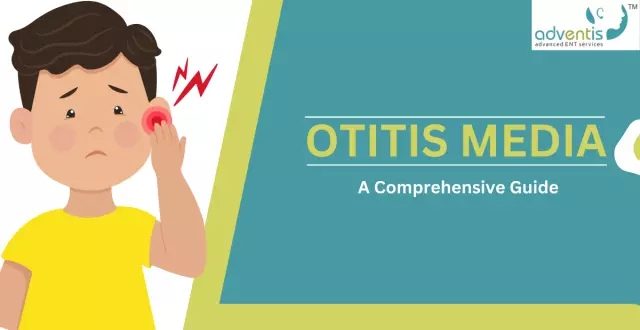- Author Curtis Blomfield [email protected].
- Public 2023-12-16 20:44.
- Last modified 2025-01-23 17:01.
Catarrhal phenomena are various symptomatic signs, occurring mainly in viral or catarrhal diseases. The main symptom of catarrh is swelling, inflammation and hyperemia of the mucous membranes. Most often, such processes occur with influenza, colds, acute respiratory diseases. Catarrh is caused by bacteria and adenoviruses. Once in the body, they cause many diseases.
How do catarrhal processes occur in the upper respiratory tract?
Signs of catarrhal phenomena of the upper respiratory tract are characterized by inflammation of the mucous membrane of the bronchi, as a result of which sputum begins to accumulate in large quantities, cough and runny nose appear. Not only a certain area is affected, but also those located next to it, since the mucous membrane of the respiratory tract is a single whole.

Catarrhal phenomena of the upper respiratory tract, depending on the place of infection, are as follows:
- rhinitis;
- tonsillitis;
- laryngitis;
- sinusitis (frontal sinusitis);
- pharyngitis.
What causes catarrhal diseases?
People of any age are exposed to catarrhal phenomena, but most often pathological processes develop in older people due to reduced immunity.

Catarrhal processes can occur if a person's work is associated with harmful substances. Chemical elements have a negative effect on the respiratory tract, which leads to catarrhal changes. Also, catarrh can occur due to hypothermia, in wet weather, with sudden changes in temperature.
In addition, predisposition to diseases plays an important role. Anatomical features of the structure of the human body, alcohol or tobacco abuse, poor environmental conditions, acute or chronic diseases, low immunity can provoke the appearance of the disease.
Symptoms of catarrh
The general symptoms of all catarrhal processes are almost the same. These include:
- shortness of breath;
- temperature increase;
- lack of appetite;
- body aches, general malaise;
- feeling dry mouth;
- headache;
- dry cough.

Can catarrhal phenomena occur without temperature? This is quite possible and this happens if the disease is mild, the patient has reduced immunity, andalso with some viral diseases (for example, with rhinovirus infection).
How are catarrhal processes diagnosed?
Catarrhal phenomena accompany a large number of diseases. During a visit to the doctor, he must provide a complete medical history, describe its symptoms. In order for the treatment to be successful, it is important to determine the pathogen that caused the disease. Be sure to donate blood and other body fluids for analysis, which will identify viruses, bacteria and other microorganisms that have developed the disease. If the disease is allergic, then a series of tests and samples are carried out to determine the irritating agent.

In the presence of catarrhal phenomena, the doctor, first of all, will suspect acute respiratory infections, acute respiratory viral infections or influenza. If the results were obtained and the correct diagnosis was made, the patient is prescribed the appropriate treatment. With the unclear nature of the disease, adequate treatment is possible only after establishing the correct diagnosis.
In some cases, in order to establish the exact cause of the chronic course of catarrhal phenomena, they study the relationship with the living conditions of the patient. A runny nose that does not go away for a long time, constant tearing and coughing can occur during many years of living in damp and poorly ventilated rooms, as a result of which a fungus begins to multiply intensively on the walls, the spores of which settle on the human mucous membrane.
Catarrhal phenomena with influenza
Catarrhal processes with influenza can occur as at the very beginningdisease, and after a day or more. The patient begins to tickle the throat, there is pain when swallowing, the nasal mucosa swells, a runny nose, cough, sometimes with sputum, the voice becomes hoarse. Runny nose at the beginning of the disease is accompanied by serous-mucous discharge, and later it becomes thick mucopurulent. Sometimes nosebleeds occur. The tonsils, soft palate, uvula, arches, posterior pharyngeal wall swell and often become cyanotic. Laryngitis, tracheobronchitis, laryngotracheitis, bronchitis may occur.
Accompanied chills are not always severe. Initially, it is quite small, and sometimes completely absent. Dizziness occurs almost immediately and may even occur when lying down.
Treatment of catarrhal diseases
Since catarrhal phenomena are just symptoms of a disease, therefore, first of all, it is necessary to treat the underlying disease with medications and procedures prescribed by a doctor.

For infections, drink plenty of water, in more severe cases - infusion therapy, antifungal and antiviral drugs, antibiotics or sulfonamides. It is recommended to rinse the nasal passages with nasal sprays with sea water, instill vasoconstrictor drops. The throat is irrigated with special solutions, anti-inflammatory drops are instilled into the eyes.
The doctor may prescribe sputum thinners, cough medicines, as well as physiotherapy: inhalations,electrophoresis, UHF, heating, ultrasound. If catarrhal symptoms are allergic, antihistamines are prescribed.
Conclusion
Thus, if symptoms of catarrh occur, it is necessary to see a doctor as soon as possible to treat the underlying disease. It is better not to self-medicate, so that serious complications do not arise. To avoid diseases of the upper respiratory tract, preventive measures should be taken, because it is much easier to prevent the disease than to treat it later.






